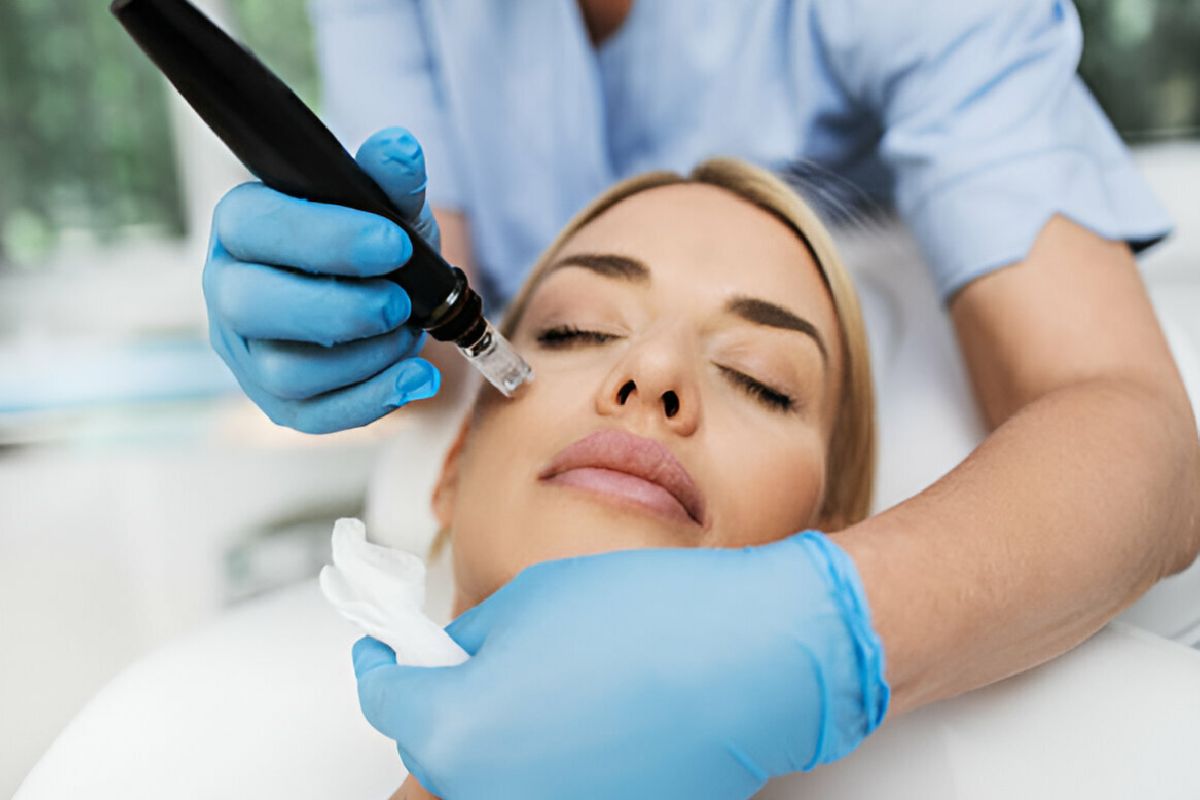Microneedling treatment with Vivace has gained popularity for its ability to rejuvenate the skin, improve texture, and address various dermatological concerns. However, understanding the recovery process is crucial for optimizing results and minimizing any discomfort or complications. In this comprehensive guide, we delve into the recovery process after microneedling with Vivace, including who are the best candidates, recovery tips, advanced techniques, potential costs, risks, and expected outcomes.
Using a device equipped with fine needles to create controlled micro-injuries in the skin, Vivace stimulates collagen production and promotes cellular renewal. The recovery process after microneedling treatment with Vivace is simple, but these important steps should still be followed for the best outcome.
What Does the Recovery Process Involve?
The results of microneedling with Vivace become noticeable gradually as the skin undergoes the healing and regeneration process. While individual experiences may vary, most patients can expect to see improvements in skin texture, tone, and overall appearance within a few weeks of treatment. Full results typically become apparent after a series of sessions spaced several weeks apart, with maintenance treatments recommended to prolong the benefits after you have followed the recovery steps.
Immediate Post-Treatment
After the procedure, it’s normal to experience mild redness, swelling, and sensitivity in the treated area. Some patients may also notice pinpoint bleeding, which usually subsides quickly.
First Few Days
During the initial days following microneedling, the skin may feel tight, dry, and slightly rough as it begins the healing process. It’s essential to keep the skin hydrated and protected from sun exposure during this time.
Subsequent Weeks
Over the next few weeks, the skin gradually improves in texture, tone, and elasticity as collagen production increases. Any initial side effects like redness or swelling diminish, revealing smoother, more radiant skin.
Best Candidates for Microneedling
The recovery process after microneedling with Vivace is suitable for individuals looking to address various skin concerns, including:
- Fine lines and wrinkles
- Acne scars
- Uneven skin tone and texture
- Enlarged pores
- Sun damage
- Stretch marks
Ideal candidates for microneedling are generally in good overall health and have realistic expectations about the results. Consultation with a qualified dermatologist or skincare professional is essential to determine candidacy and customize the treatment plan.
Recovery Tips for Optimal Results
Maximizing the benefits of microneedling with Vivace requires diligent post-treatment care. Here are some expert-recommended recovery tips:
- Follow Post-Treatment Instructions: Your skincare provider will provide detailed instructions on how to care for your skin after microneedling. Follow these guidelines diligently to promote healing and minimize the risk of complications.
- Keep the Skin Hydrated: Hydration is crucial for supporting the skin’s healing process. Use gentle, hydrating skincare products recommended by your provider to maintain moisture levels and soothe any irritation.
- Avoid Sun Exposure: Protect your skin from direct sunlight and UV radiation, as sun exposure can exacerbate post-treatment redness and inflammation. Wear a broad-spectrum sunscreen with SPF 30 or higher, and limit outdoor activities during peak sun hours.
- Patience is Key: While you may notice some immediate improvements in your skin’s appearance, the full benefits of microneedling with Vivace develop gradually over several weeks. Be patient and consistent with your skincare routine to achieve optimal results.
Advanced Techniques for Enhanced Recovery
In addition to standard post-treatment care, several advanced techniques can further enhance the recovery process after microneedling with Vivace:
Applying topical serums or creams containing growth factors can accelerate the skin’s healing process and promote collagen production. These products help nourish the skin and optimize the results of microneedling.
Also, LED light therapy, such as red or near-infrared light, can complement microneedling by reducing inflammation, promoting circulation, and stimulating cellular repair. Incorporating LED therapy into your post-treatment regimen can enhance recovery and improve overall skin health.
Platelet-Rich Plasma Therapy, or PRP therapy, involves extracting platelets from the patient’s blood and reintroducing them into the skin to accelerate healing and enhance collagen production. Combining PRP with microneedling can further improve skin texture, tone, and firmness.
Why Is Careful Recovery Worthwhile?
When performed by a trained professional using FDA-approved devices, microneedling with Vivace is safe and effective for most skin types and tones. The procedure has a low risk of adverse effects and can deliver noticeable improvements in skin quality with minimal downtime.
Undergoing the recovery process after microneedling with Vivace offers several advantages. Unlike surgical procedures, microneedling with Vivace is minimally invasive and requires little to no downtime, making it suitable for individuals with busy lifestyles.
Microneedling with Vivace can address a wide range of skin concerns, from fine lines and wrinkles to acne scars and uneven texture, making it a versatile treatment option for many patients.
The recovery process after microneedling with Vivace plays a crucial role in achieving optimal results and ensuring a positive treatment experience. By following proper post-treatment care instructions, utilizing advanced recovery techniques, and addressing any concerns or questions with your skincare provider, you can enjoy smoother, more radiant skin and renewed confidence in your appearance. If you’re considering microneedling with Vivace, consult with a qualified provider to determine if it’s the right treatment option for you and embark on your journey to healthier, more youthful-looking skin.


